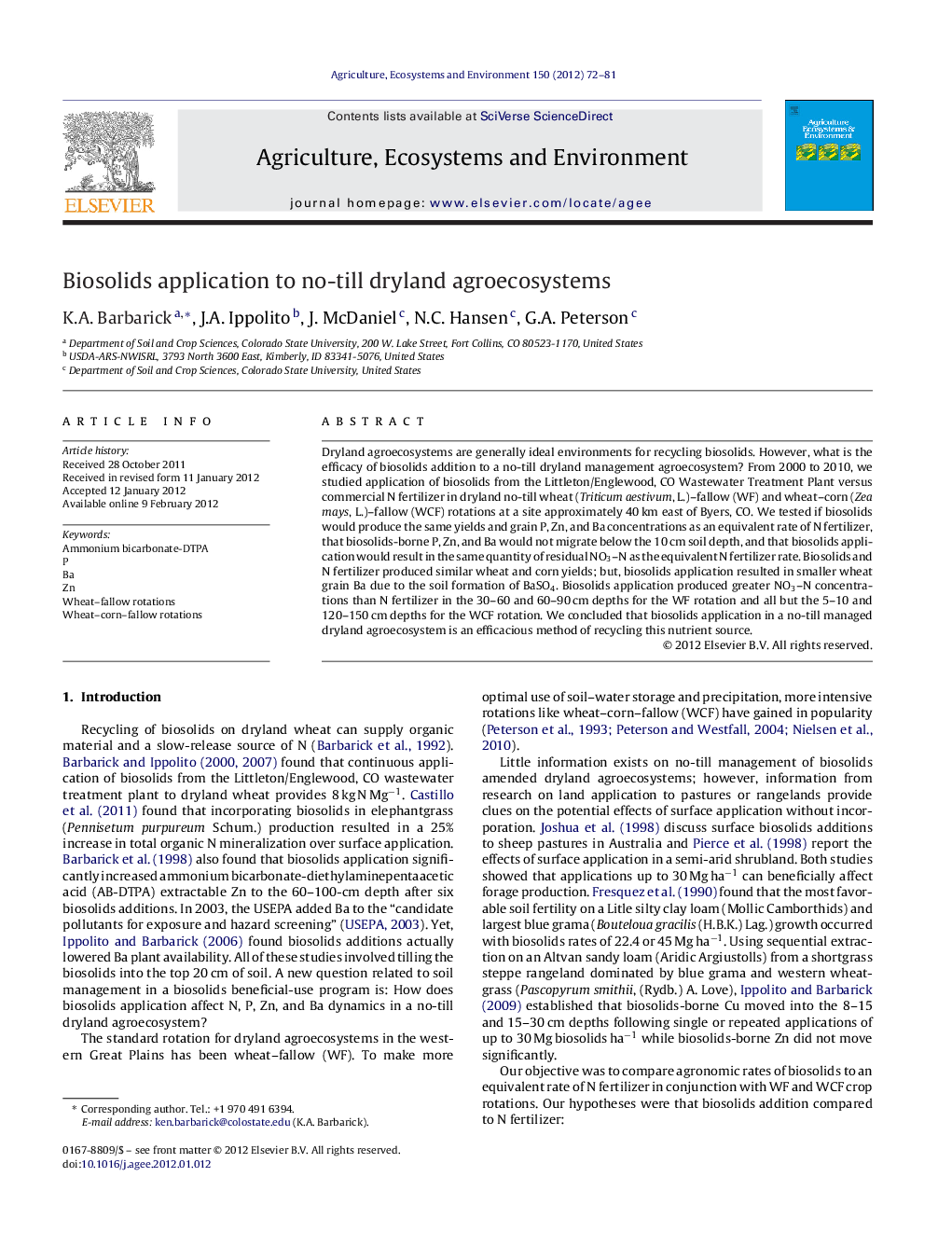| کد مقاله | کد نشریه | سال انتشار | مقاله انگلیسی | نسخه تمام متن |
|---|---|---|---|---|
| 2414521 | 1552102 | 2012 | 10 صفحه PDF | دانلود رایگان |

Dryland agroecosystems are generally ideal environments for recycling biosolids. However, what is the efficacy of biosolids addition to a no-till dryland management agroecosystem? From 2000 to 2010, we studied application of biosolids from the Littleton/Englewood, CO Wastewater Treatment Plant versus commercial N fertilizer in dryland no-till wheat (Triticum aestivum, L.)–fallow (WF) and wheat–corn (Zea mays, L.)–fallow (WCF) rotations at a site approximately 40 km east of Byers, CO. We tested if biosolids would produce the same yields and grain P, Zn, and Ba concentrations as an equivalent rate of N fertilizer, that biosolids-borne P, Zn, and Ba would not migrate below the 10 cm soil depth, and that biosolids application would result in the same quantity of residual NO3–N as the equivalent N fertilizer rate. Biosolids and N fertilizer produced similar wheat and corn yields; but, biosolids application resulted in smaller wheat grain Ba due to the soil formation of BaSO4. Biosolids application produced greater NO3–N concentrations than N fertilizer in the 30–60 and 60–90 cm depths for the WF rotation and all but the 5–10 and 120–150 cm depths for the WCF rotation. We concluded that biosolids application in a no-till managed dryland agroecosystem is an efficacious method of recycling this nutrient source.
► Biosolids application resulted in smaller wheat grain Ba due to the soil formation of BaSO4.
► Crop failures lead to excessive nitrate–N accumulation.
► Biosolids application in a no-till managed dryland agroecosystem is an efficacious method of recycling this nutrient source.
Journal: Agriculture, Ecosystems & Environment - Volume 150, 15 March 2012, Pages 72–81